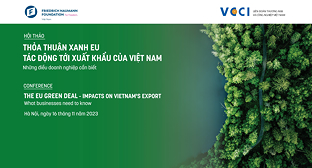Eliminating Trade Remedies from the WTO: Lessons from Regional Trade Agreements
05/05/2011 12:00
Author: Tania Voon
Introduction
Current difficulties in the Doha Round of multilateral negotiations at the World Trade Organization (‘WTO’) are reflected in the proliferation of bilateral and plurilateral trade agreements according preferential treatment to individual trade partners (generally referred to as preferential, regional or free trade agreements (‘RTAs’)), as well as the continued use of so-called ‘trade remedies’ (anti-dumping, countervailing, and safeguard measures ostensibly intended to counter ‘unfair’ trade or unexpected increases in imports) as a tool to protect local industry. Both of these developments threaten to undermine the underlying objectives of the WTO, which include enhancing global welfare through trade liberalisation while taking into account the particular needs and goals of each WTO Member. This paper reflects on the widespread use of RTAs and trade remedies in order to provide lessons for the benefit of all WTO Members. In particular, it explores RTAs as positive models to reduce or eliminate the use of trade remedies among WTO Members, providing a concrete case study of the potential for ultilateralizing regionalism’.
Reducing reliance on trade remedies would diminish market distortions and enable fairer competition among producers across the world, bringing the WTO closer to its theoretical foundations (encouraging Members to specialise in areas in which they have a comparative advantage) and hence closer to its broader welfare objectives. This goal is all the more critical in the current global financial climate, when WTO Members worldwide appear particularly tempted to use trade remedies to protect their industries. The continued and widespread use of trade remedies by WTO Members has led some to conclude that ‘[t]rade remedies appear to be permanent fixtures in international trade agreements’. It is true that a wide range of developed and developing countries (well beyond the group of traditional users) are now heavily reliant on trade remedies, rendering impossible wholesale reform in the near future.
However, this should not prevent thoughtful, steady progress towards the longer-term goal of reducing the use of trade remedies among WTO Members, in order to begin to bridge the gap between economic rationality and political reality regarding trade remedies in the WTO. It may well be too soon to propose the wholesale elimination of anti-dumping measures or any other form of trade remedy in the WTO, but I do not believe it is too late.
Part II of this paper describes in more detail the tension that exists between WTO obligations and objectives on the one hand and RTAs and trade remedies on the other, focusing on the theoretical and practical problems created by trade remedies for the multilateral trading system. In doing so, it introduces the exceptions for trade remedies contained in the WTO’s General Agreement on Tariffs and Trade 1994 (‘GATT 1994’), Agreement on Implementation of Article VI of the General Agreement on Tariffs and Trade 1994 (‘Anti-Dumping Agreement’),6Agreement on Subsidies and Countervailing Measures (‘SCM Agreement’), and Agreement on Safeguards (‘Safeguards Agreement’). It also outlines possible reforms to improve the current system in the longer term. Part III reviews more than 150 RTAs to determine the extent to which their provisions restrict or eliminate trade remedies among RTA partners, the corresponding implications for international trade, and the conditions that facilitated this result. Part IV considers whether Article 41(1) of the Vienna Convention on the Law of Treaties (‘VCLT’), Article XXIV of the GATT 1994, or other WTO provisions allow or require the elimination of trade remedies in RTAs, or whether, conversely, they pose an obstacle to this approach and therefore preclude the use of RTAs as a step towards reducing the use of trade remedies among WTO Members more generally.
The paper concludes that a small number of RTAs do provide realistic models for ultimately reducing or eliminating trade remedies across the WTO Membership. Eventually, WTO Members could instead respond to predatory dumping with competition laws, to illegal subsidies with WTO dispute settlement, and to import surges with safeguards pursuant to a reformed safeguard regime. In the shorter term, WTO provisions do not prevent RTA partners from eliminating trade remedies amongst themselves.
Các tin khác
- The Dispute Settlement Crisis in the World Trade Organization: Causes and Cures (16/03/2018)
- Modification of trade defence rules regarding non-market economy costs and prices (23/02/2018)
- Research Paper: Options for Disciplining the Use of Trade Remedies in Clean Energy Technologies (03/08/2017)
- Addressing the rise of Trade Remedies against Environmental Goods (03/08/2017)
- Anti-dumping Retaliation - —A Common Threat to International Trade (15/11/2016)
 Home
Home
 About Us
About Us




















